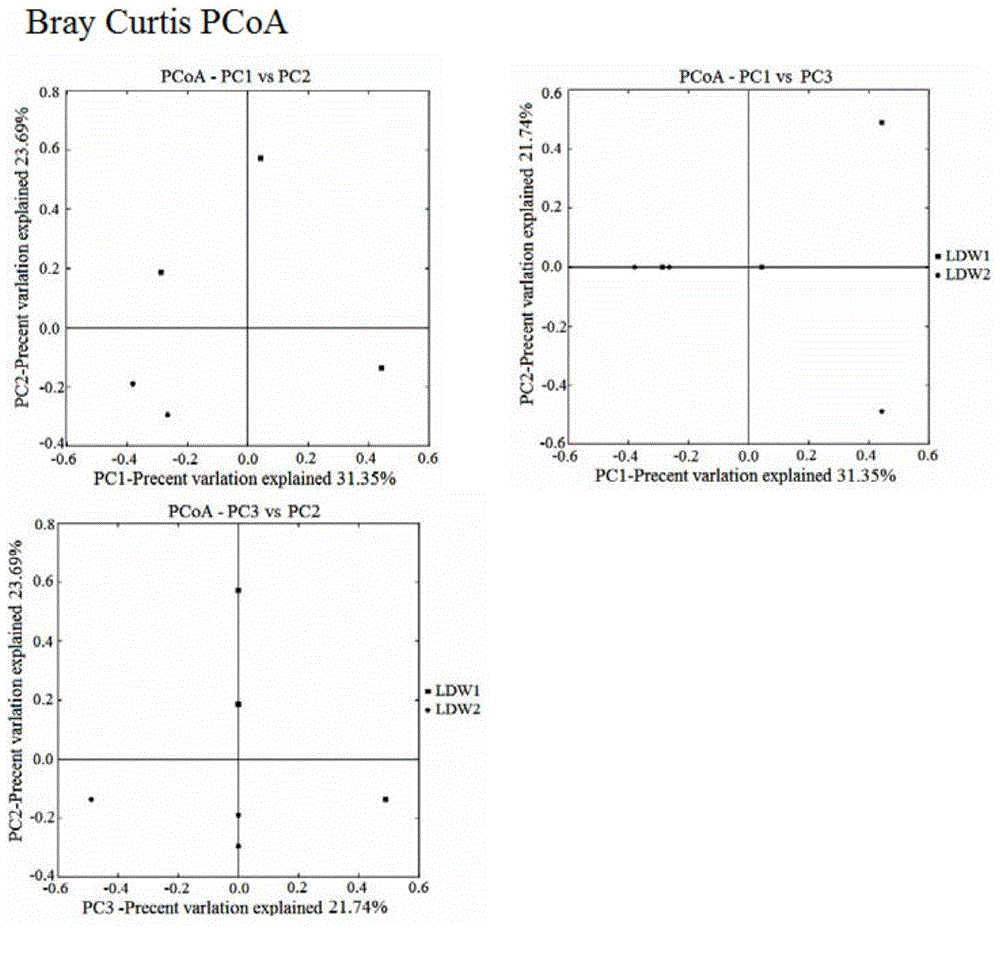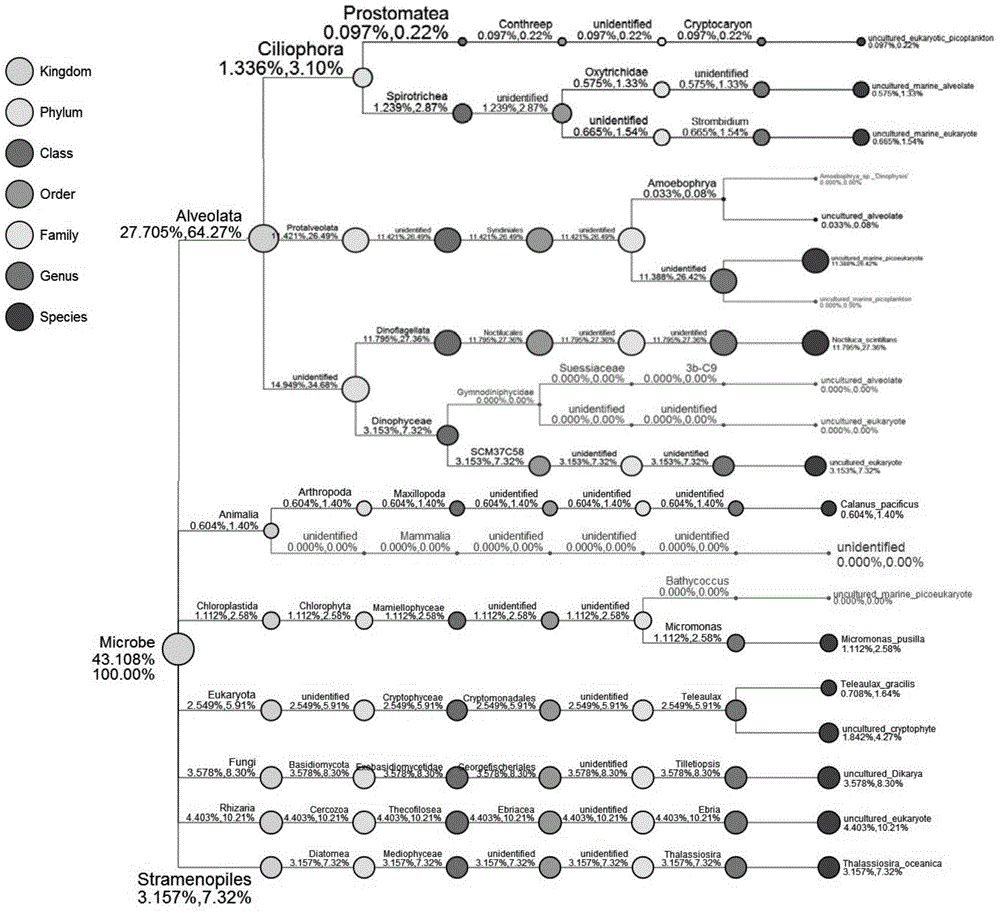Detection method for biological community structures of ocean brown tide
A detection method and technology of biological communities, which can be used in the determination/inspection of microorganisms, biochemical equipment and methods, etc., and can solve problems such as difficult practical operation, difficult to distinguish, and small individuals.
- Summary
- Abstract
- Description
- Claims
- Application Information
AI Technical Summary
Problems solved by technology
Method used
Image
Examples
Embodiment 1
[0049] The detection method of marine brown tide biological community structure includes the following steps a to e:
[0050] a. Sample collection and pretreatment
[0051] Collect 2-5L of surface seawater, first filter it through a 200-mesh sieve, and then use a nitrocellulose membrane with a pore size of 0.22 μm to collect pico, micro and small plankton, transfer the filter membrane to a 10mL sterile centrifuge tube, and place in- Freeze at 20°C or -80°C for analysis of pico-eukaryotes.
[0052] b. Extraction of DNA
[0053] (1) Lyse algae cells: transfer the above filter membrane into a 1.5mL sterilized centrifuge tube, cut it into pieces with sterilized scissors, add 500 μL CTAB (cetyltrimethylammonium bromide method) buffer, 1 μL mercapto Mix ethanol and 5 μL proteinase K evenly, and place in an air bath at 55°C for 1-2 hours until the algae liquid is transparent;
[0054] (3) Extraction: Add 300 μL saturated phenol, 300 μL CI (chloroform: isoamyl alcohol = 24:1) and g...
Embodiment 2
[0080] At present, the amplification primers used in the 18S rDNA eukaryotic molecular identification technology are general primers for eukaryotic organisms. In order to detect the species of brown tide organisms, we designed and verified the exclusive primers for brown tide algae.
[0081] 1. Primer design
[0082] 179 algal 18S rRNA sequences were downloaded from the NCBI database, including 11 phyla, 23 classes, and 179 species. The software MEGA4 was used to perform multiple sequence alignment on 179 sequences, and the comparison results are shown in figure 1 .
[0083] According to the comparison results, the gene regions F(V4)632-653, R(V4)1054-1076, F(V9), 1385-1405, and R(V9)1737-1759 were selected, and their sequences are shown in Table 2.
[0084] Table 2. Algae 18S rRNA variable region and its base sequence of the present invention
[0085]
[0086] Use the software DNAMAN to detect the complementarity of the two primers, and FASTPCR to evaluate the propertie...
Embodiment 3
[0143] From June to July 2013, the seawater in Dalian's exchange island culture ponds and near-shore waters was golden yellow. The brown tide warning analysis was carried out in this sea area by the method described in Example 1. After taking 1L surface seawater in the target sea area, the sample After collection and pretreatment, lyse the algae cells, extract their DNA, perform PCR using V4-F / R, build a library with the kit, and use the Illumina MiSeq sequencing platform PE300 sequencing solution to carry out sequencing on the machine according to Example 2. Data information, obtain OTUs information and further obtain information such as algae species and abundance. Finally, statistical analysis was performed according to the method of step e in Example 1, and the test results are shown in Table 7-9. In this embodiment, three parallels were performed for each test sample, and the standard error of the test result of the first dominant species was within ±0.04.
PUM
| Property | Measurement | Unit |
|---|---|---|
| Sensitivity | aaaaa | aaaaa |
| particle diameter | aaaaa | aaaaa |
Abstract
Description
Claims
Application Information
 Login to View More
Login to View More - R&D
- Intellectual Property
- Life Sciences
- Materials
- Tech Scout
- Unparalleled Data Quality
- Higher Quality Content
- 60% Fewer Hallucinations
Browse by: Latest US Patents, China's latest patents, Technical Efficacy Thesaurus, Application Domain, Technology Topic, Popular Technical Reports.
© 2025 PatSnap. All rights reserved.Legal|Privacy policy|Modern Slavery Act Transparency Statement|Sitemap|About US| Contact US: help@patsnap.com



